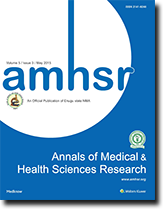

Lung cancer causes hundreds of deaths each year worldwide. The early stage diagnosis and prognosis can significantly reduce the mortality rate. Automatic histopathological image classification plays a keys role in reducing the death due to lung cancer. Now, with the advancement in medical imaging technology, Whole Slide Imaging (WSI) is becoming a routine clinical procedure in pathology. Recently, machine learning and deep learning has shown potential to analysis the pathological images for the early stage cancer prediction such as lung cancer detection. However, training neural networks from scratch requires a large number of labeled images. This is not always feasible, especially with medical imaging data. A promising solution is a transfer learning application on a neural network. In this research paper, transfer learning is applied through ine-tuning the pretrained EffiecientNet-B0 model to detect three different classes of lung cancer. The designed model achieved an accuracy of 99.15%, 99.14%, and 98.67% on the train, test and validation set.
Select your language of interest to view the total content in your interested language
Annals of Medical and Health Sciences Research received 24805 citations as per google scholar report
 The Annals of Medical and Health Sciences Research is a monthly multidisciplinary medical journal.
The Annals of Medical and Health Sciences Research is a monthly multidisciplinary medical journal.